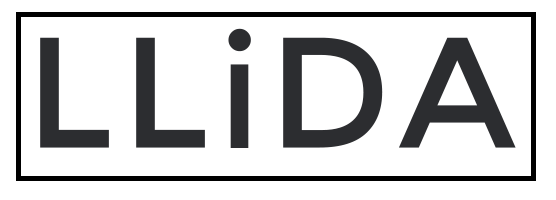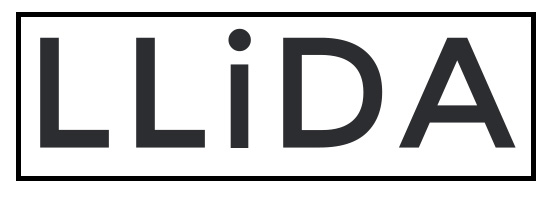It is worth noting that these tags/categories reflected the specific target group of the intervention/activity, and that many of these resources and activities could be appropriate and useful to other groups of learners. Seven of the snapshots were specifically focused on learner transitions.
| Total number of snapshots 41 |
| Category |
Number |
| Exemplar type |
| Policy or strategy |
2 |
| Central services provision |
15 |
| Provision in curriculum – separate module |
6 |
| Provision in curriculum – in topic module |
11 |
| Learner led provision |
3 |
| Literacy & competency testing |
1 |
| Educational context |
| Adult learners |
6 |
| Further Education |
6 |
| Higher education |
34 |
| Foundation degree |
2 |
| Literacies addressed |
| ICT literacies |
19 |
| Information literacies |
22 |
| Academic literacies |
22 |
| Employment skills |
2 |
| Media literacies |
1 |
| Literacy frameworks |
8 |
| Subject discipline (where relevant) |
| Art & Design |
2 |
| Computer Science |
1 |
| Environmental studies |
1 |
| Health |
5 |
| Humanities |
2 |
| Landscape & Garden Design |
1 |
| Management |
1 |
| Mathematics |
1 |
| Psychology |
1 |
| Research skills |
1 |
| Sciences |
1 |
| Social Sciences |
2 |
| Statistics |
1 |
| Teaching |
5 |
| Technologies cited |
| E-portfolio system |
3 |
| PDAs |
1 |
| Reference Management systems |
1 |
| PLEs |
1 |
| Podcasts |
4 |
| Video |
6 |
| VLEs |
12 |
| Virtual worlds |
1 |
| Searchable database |
2 |
| Social software/web 2.0 |
6 |
| Wiki |
4 |
| Approaches to student support |
| Assessed |
9 |
| Competence testing |
1 |
| Interviews |
1 |
| Online tutorials |
9 |
| Peer mentoring |
5 |
| PDP |
2 |
| Printed resources |
3 |
| Self Regulated Learning |
4 |
| Student induction |
4 |
| Workshops |
5 |
Table 4.1: various categorisations of snapshots submitted
The spread across literacies was fairly even, though these figures hide some interesting variations:
- ICT literacies (19)
- Information literacies (22)
- Academic literacies (22)
Many snapshots supported more than one of these literacies: in fact good practice seems often to involve working at the interface between high-level terms, between competence frameworks, and between institutional roles. A very few contributors refer to frameworks but none had been implemented or integrated directly into practice, highlighting the trend for institutions to create bespoke frameworks that are right for their needs (NB this is almost certainly more available as a practise and value in HE than in FE). Oxford Brookes2, LSE and Edinburgh are all good examples of this. The Oxford Brookes institutional strategy was mapped retrospectively to the Sconul 7 Pillars framework, and the ease with which this was done reinforces our impression that the framework – or the terms it uses – are already part of the discourse of staff working in this area.
Other literacies identified explicitly included:
- Employment skills (2)
- Media Literacies (1)
It is worth noting that many of the exemplars in practice did support the use of different media, including two of the most radically embedded into their respective curricula (see discussion under 4.7 below). The term ‘media literacies’, and the idea of paying critical attention to media as supporting different social and communicative practices, are perhaps not in general currency. The exemplar that included this term explicitly was for a module entitled ‘Media and Information Literacy Course Unit’ within a Masters course in Digital Technologies, Communication and Education, a subject area in which ‘media’ is already a key locus of pedagogic effort and a central interpretive term.
Employability is also notable by its near absence from these snapshots, despite its prevalence in institutional strategies (see 4.5 below).
The terminology used in the snapshots is variable, reflecting that our methodology emphasised practical provision and directed contributors to use the terminology they were most familiar with. Nine of the snapshots used the terms ‘digital literacies’ or ‘digital literacy’, usually in the context of ICT skills, 11 mentioned communication skills and 9 mentioned critical skills or literacy. We are concerned to note from workshops that the language of literacy, even among those who identified most closely with our study, is still unfamiliar or very contested. It seems certain that we missed valuable work, particularly among practitioners in departments, whose professional role and language would not have exposed them to the terms we were using.
Where exemplars concerned activities within the curriculum, the subject heading tags show a very strong bias towards applied subjects (i.e. vocational/professional): health related (5) social care (2) and teaching/education (5), along with two others (garden design and management). Two other exemplars are allied with cross-disciplinary skills (statistics, research skills) rather than a specific discipline. The clear conclusion is that literacies are more prominently or more self-consciously addressed by teachers of applied subjects and applied skills, though again these may the only practitioners with whom the terms of our invitation had any resonance.
The education exemplars in particular are concerned with ensuring that teachers are able to utilise the range of technologies available to them to support learning. There are also a significant number of snapshots that describe staff development interventions, particularly in the use of web 2.0 technologies. Other work (e.g. Sharpe et al., 2005) has highlighted the difficulty of bringing learners to the centre of attention in investigating e-learning practices., as was our intention here However, there is increasing evidence that even digitally confident learners still look to their tutors for guidance on use of ICT to support their learning , and this understanding may be reflected in the number of interventions that focus support on tutors’ skills.
One surprise to us was the number of interventions based around the virtual learning environment. It may be that this is simply the most effective means of reaching learners: recent research does indicate that learners place great value on having one location from which they can access everything of relevance to their studies. However, we expected a much higher number of interventions based around e-portfolio systems (which we tried hard to distinguish from VLEs with an e-portfolio function) where learners have greater ownership of the processes involved. This imbalance may reflect a lack of depth in the embedding of literacies, with resources available but with no requirement on learners to diagnose their needs, reflect on their identities as learners, or integrate literacies into their learning goals.
The snapshots include a fairly wide range of interventions with online tutorials (8) and workshops (5) being the most significant. Seven snapshots included assessed activities whilst only two described competence testing or skills auditing as a first step in providing support. A few of the snapshots refer to online resources developed to support learners acting independently, but many focus on the value of tutors and other learners to support the development of literacies. In practice most resources, whether online or print-based, are designed for delivery in a supportive context whether that is based around workshops, one-to-one support, or embedded into programmes of study. Once again, though, PDP (2) is not widely used as a means of addressing literacy needs.


